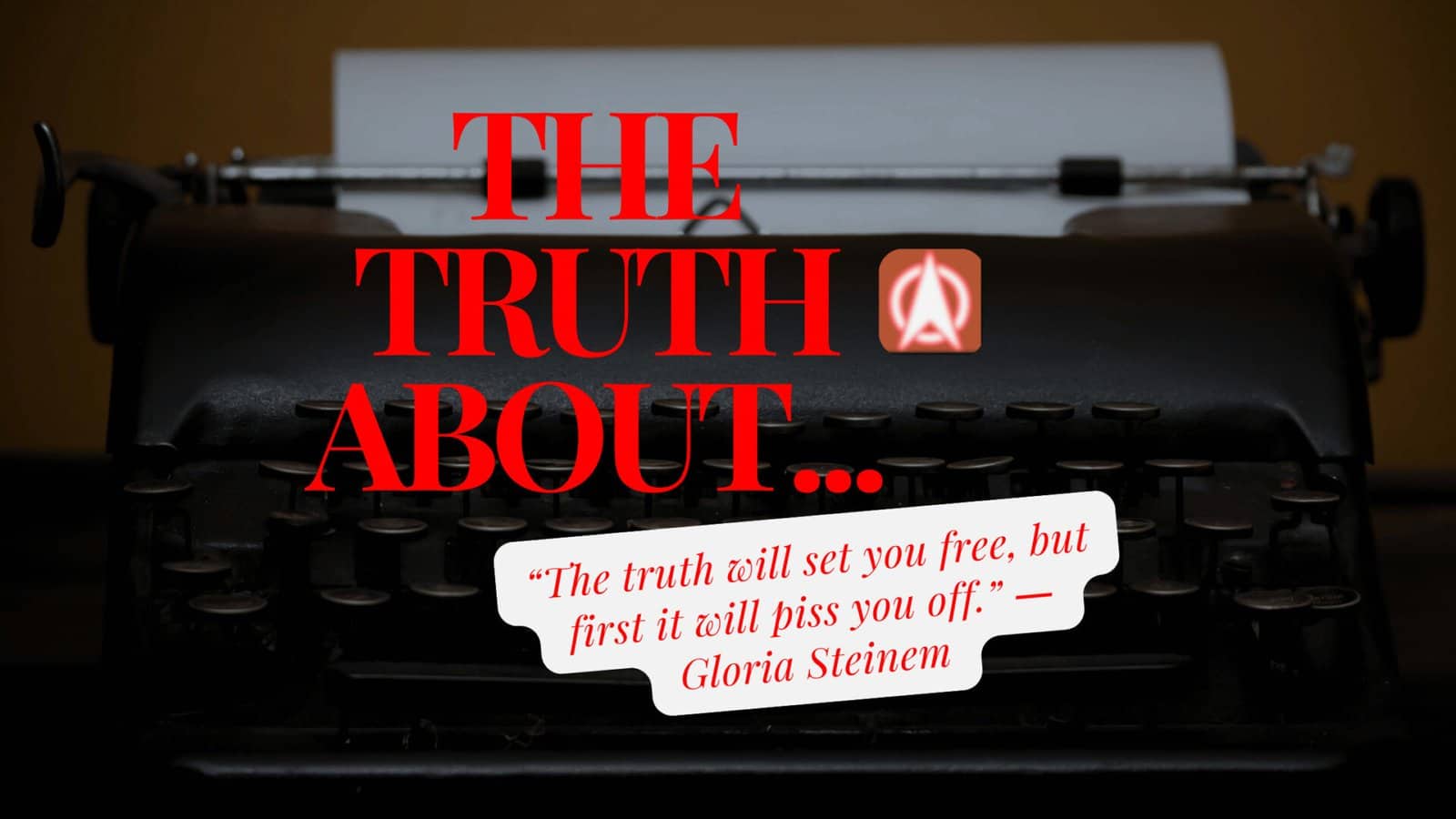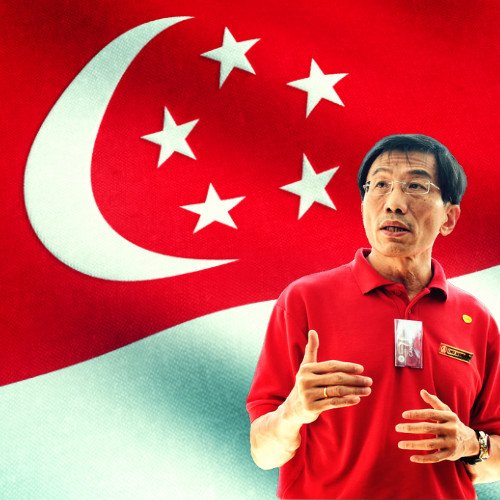Mr Chiam See Tong has accused Dr Chee Soon Juan of usurping his post in the party and challenged him to resign if he really had not sought to lead it. He also criticised the acting secretary-general of the SDP for “hopping onto a power vehicle, a ready-made party” which he, Mr Chiam, had founded 13 years ago.

This report appeared in the Straits Times on 3 Jul 93. Since then this idea that I usurped Mr Chiam’s position has been so extensively repeated – and continues to be repeated – that it has become historical fact.
The PAP was only too happy to propagate this falsehood. That same year it published a cartoon (above) in its magazine Petir showing a series of drawings which related the story of a camel with my face on it being invited by a man resembling Mr Chiam into a tent. The camel was very well taken care of inside the tent. The cartoon then shows the camel kicking the man out of the tent, dazed and bruised.
This cartoon was obviously meant to drive home the point that I had ungratefully forced Mr Chiam out of the SDP after he had so kindly taken me in. For maximum effect, the story was repeated in the Straits Times (14 Aug 93).
Seventeen years later, the Straits Times is at it again this time reporting Mrs Lina Chiam as accusing me of “oustering her husband from the party he founded in 1980.” (29 Mar 10) Mrs Chiam is quoted as saying: “If he (Dr Chee) really wanted to keep Mr Chiam, he could have politely declined the position of secretary-general.”
It has come to a point where even an academic has documented in his book, which he uses to teach his political science class, this falsehood as fact. I will provide the details of this matter in Part 3 of this series.

For too long this story has circulated and it has been ingrained in the minds of Singaporeans that I had actually usurped Mr Chiam’s post. Worse, the issue is still being resurrected today.
The PAP and the media must be stopped from continuing to spread these untruths about the SDP and me as and when they like it, especially whenever the elections draw near.
It is for these reasons that I need to present my side of the story which has hitherto been largely obscure. For the sake of my party, my colleagues and my supporters, I must set the record straight.
I will do this not by depending on my memory because that will give rise to criticisms about selective remembering on my part. Instead, I rely on facts that were presented in newspaper reports and on what was recorded in court. I provide the dates of these reports so that readers can independently check and verify what I have written.
Even before I joined the party…
Problems were already brewing between Mr Chiam and his CEC colleagues even before I had joined the SDP. This was revealed in court when he sued the SDP in 1993. Even he had admitted to this:
Mr Chiam: “To me, the problems started in 1988, when Wong Hong Toy and about 15 other Workers’ Party members joined the party…there was backbiting and other problems…”
Former SDP chairman Mr Ling How Doong confirmed this: “In my view, all the troubles between Chiam and Wong Hong Toy started after the 1991 General Elections, when Wong came to help me full-time.”
Ashleigh Seow
Mr Ashleigh Seow (Mr Francis Seow’s son), then a CEC member, testified: “Most people have had a difficult time with [Mr Chiam] at one time or another.” Mr Seow was referring to the period between 1988-1991 and to CEC members like Messrs Jimmy Tan, Cheo Chai Chen, Francis Yong and himself.
Mr Kwan Yue Keng, another CEC member had, in 1987 spoken up against “one-man shows” referring to Mr Chiam.
Mr Chiam replied: “Someone must lead. Who initiates? The leader.” He claimed credit for the winning “by-election effect” strategy.
Mr Ling retorted that it was actually the idea of Mr Mohammed Jufrie Mahmood (then) of the Workers’ Party.
Mr Chiam: “Who implemented it?”
Mr Ling: “The CEC.”
Mr Chiam: “Collective leadership is nonsense.”
Mr Ling: “You’re talking of dictatorship.”
( Chiam’s ‘strained ties’ with SDP, Straits Times, 24 Nov 93; SDP split: Chiam against the rest, Straits Times, 4 Dec 93)
Readers must note that all the above happened between 1988-1991 before I had joined the party. But after the split, I am suddenly blamed by the PAP for kicking Mr Chiam out. Like all the rest of the CEC members, I had only one vote. How could I have single-handedly forced Mr Chiam out?
We persuaded Chiam to return
The unalterable truth is that it was Mr Chiam who first resigned as the secretary-general of the party on 17 May 93. When the CEC refused to support his motion to censure me for going on a hunger strike, Mr Chiam tendered his resignation on the spot:
Chairman
SDP
SingaporeDear Sir,
Resignation as SG of the Party
In view of the whole CEC voting against me on the question of the hunger strike of Dr Chee Soon Juan, there is in effect a no confidence vote in the S-G.
The only decent thing for him to do is to resign.
According I resign as the S-G of the party forthwith.
Yours faithfully,
(signed)
Chiam See Tong
Immediately after he handed over his letter, a few CEC members chased after him and told him not to be so rash. Mr Chiam nevertheless drove off in his car.
In the following days and weeks a few CEC members, including me, made several overtures to persuade him back.
But Mr Chiam insisted that he would return as secretary-general only if the CEC gave him sole power to appoint and dismiss CEC and cadre members. He also wanted us to sack Mr Wong Hong Toy, then vice-chairman.
This was clearly undemocratic and, more importantly, against the Party’s constitution. It was a demand that we could not accede to.
What was Mr Wong’s transgression? Mr Chiam pointed to Mr Wong’s four criminal convictions in 1986 when he was the Workers’ Party chairman. Mr Wong was fined $5,000 and jailed for one month for making a false declaration of the party’s accounts. (It’s Wong Hong Toy that Chiam wants out of party’s CEC, Straits Times, 16 Jul 93)

Wong Hong Toy (glasses) beside Jeyaretnam
The problem was that Mr Wong was convicted together with the late J B Jeyaretnam who was subsequently struck off the rolls because of the convictions. On appeal by Mr Jeyaretnam, London’s Privy Council wrote that both men, “by a series of mistrials…have suffered a grievous injustice. They have been fined, imprisoned and publicly disgraced for offences of which they are not guilty.”
We, of course, subscribed to the Privy Council’s ruling and that was why we could not agree with Mr Chiam’s condemnation of Mr Wong, which was akin to condemning Mr Jeyaretnam.
Besides it was Mr Chiam who, as the secretary-general, had negotiated and approved Mr Wong’s entry into the SDP. The irony of ironies was that he did this without the knowledge of party chairman Ling How Doong. (SDP split: Chiam against the rest, Straits Times, 4 Dec 93)
We kept Chiam’s resignation under wraps
Through all the negotiations, the CEC kept Mr Chiam’s resignation under wraps for one full month. It was only when we felt that we could not conceal the matter anymore that Mr Chiam’s resignation was made public.
Important questions that readers must ask are: First, if the CEC wanted to force Mr Chiam out, why did we wait one whole month to announce the matter? Second, why did we repeatedly visit Mr Chiam and asked him to change his mind if we really wanted him out? Why did we not, instead, pounce on the opportunity and quickly announce his resignation? After all, we were in possession of Mr Chiam’s hand-written resignation note – complete with signature.
The truth is that nobody – including me – wanted Mr Chiam out. Yes, CEC members differed with him about the censure motion but this didn’t mean that we wanted him to step down as secretary-general.
What it does mean is that Mr Chiam could not have everything his way in the CEC. But what democratic leader could? Is this not what we criticise the PAP for?
The truth is that Mr Chiam was having a rocky relationship with his colleagues in the CEC way before I had come onto the scene because of his own leadership problems. It was at bursting point when I joined the party. I certainly was not the one who forced him out.
But some may ask why, if we did not want to force Mr Chiam out, did we expel him fom the party? I will explain this in Part 2.
What is The Truth About...?
In the spirit of remembrance and reflection, I am re-publishing a series of essays titled “The Truth About…,” delving into pivotal moments in the democracy movement over the past 15 to 20 years. These posts serve as a testament to the enduring struggle for democratic ideals and the pursuit of truth in Singapore.

The Singapore Democratic Party's Journey Through Time
Delve into the rich history of the Singapore Democratic Party (SDP), a key advocate for democracy and human rights in Singapore since its founding in 1980 by Chiam See Tong. This timeline highlights significant milestones, from early electoral successes and leadership transitions to ongoing advocacy under Chee Soon Juan.
Championing Democracy: In-Depth Analyses
Explore political articles offering in-depth analysis and critical perspectives on the current government of Singapore. These commentaries, penned by Dr. Chee Soon Juan, provide a thought-provoking examination of national policies, governance, and the implications for our society. Dive into these pieces to gain a deeper understanding of the challenges and opportunities facing Singapore today.
Take the Democratic Challenge Quizzes Now!
Embark on an enlightening journey through Singapore’s political history and democratic evolution. Engage with our curated quizzes that delve into key issues, the influential Singapore Democratic Party, and the inspiring story of Dr. Chee Soon Juan. Each quiz offers a unique opportunity to learn and reflect on the dynamic forces shaping Singapore’s democracy. Click the below and start exploring today!









